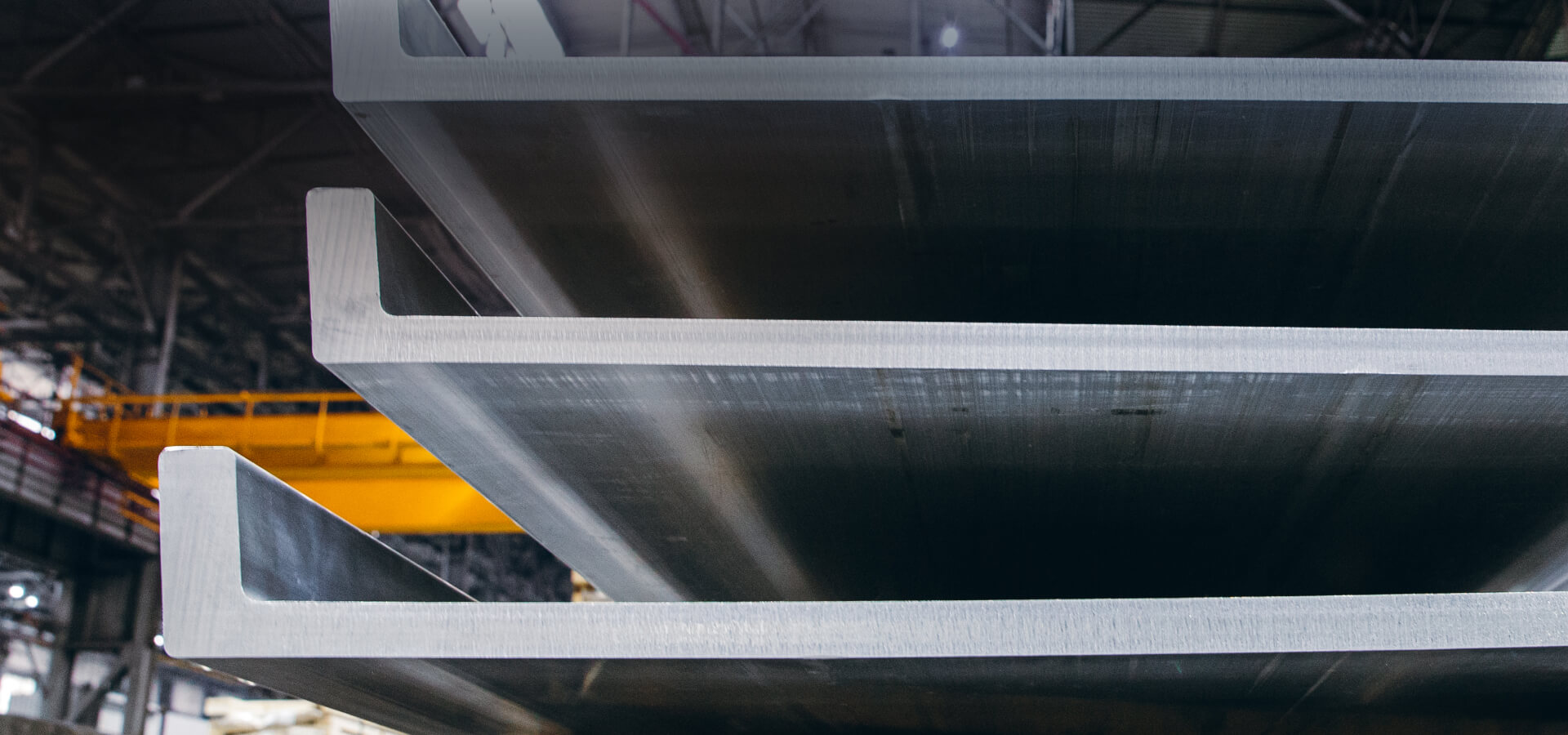
Aluminium
In his time, Dmitry Mendeleev said that «aluminum metal with its light weight, high strength and low changeability in air is very suitable for production of some specific items». Aluminum is one of the most common and cheap metals. One can not imagine the present-day reality without aluminum, that’s why aluminum is called «the metal of the 20th century». It is known for its high processibility as it can be easily subjected to forging, die forging, rolling, drawing and extrusion.
Pure aluminum is quite a soft metal, it is used for manufacture of electric wire, structural components, foil for food substances, utensils and «silver» paint. This good-looking and light metal is widely used in construction and aircraft building. It is also known that aluminium reflects the light very well, thus it is used for fabrication of mirrors by metal spraying in vacuum.
In aircraft building, mechanical engineering and construction industries aluminum alloys of higher strength are used. One of the most popular ones is aluminum — copper — magnesium alloy (duralumin or just dural, named after the German city Duren). In the quenched condition this alloy is characterized by especially high strength which is about 7 times higher than that of pure aluminum. At the same time it is practically 3 times lighter than iron. It is produced by melting aluminum with some additions of copper, magnesium, manganese, silicon and iron.
Another popular material is silumin — casting aluminum — silicon alloy. Aluminum is also used for fabrication of high-strength, cryogenic (frost — resistant) and heat-resistant alloys. Aluminum alloy items can be easily covered with protective and decorative coatings. Light weight and high-strength of aluminum alloys are of high demand in aerospace industry. Thus, aluminum — magnesium — silicon alloy is used for manufacture of helicopter propellers.
VSMPO-AVISMA Corporation produces high-percentage ferrotitane of the FTi70S1 brand according to GOST 4761. Ferrotitane is smelted in induction furnaces. Ferrotitane ingots are crushed to pieces of fractions of 0-10 mm and 10-50 mm. Crushed ferrotitane is packed in soft containers weighing 1 ton.